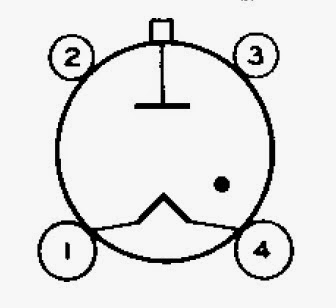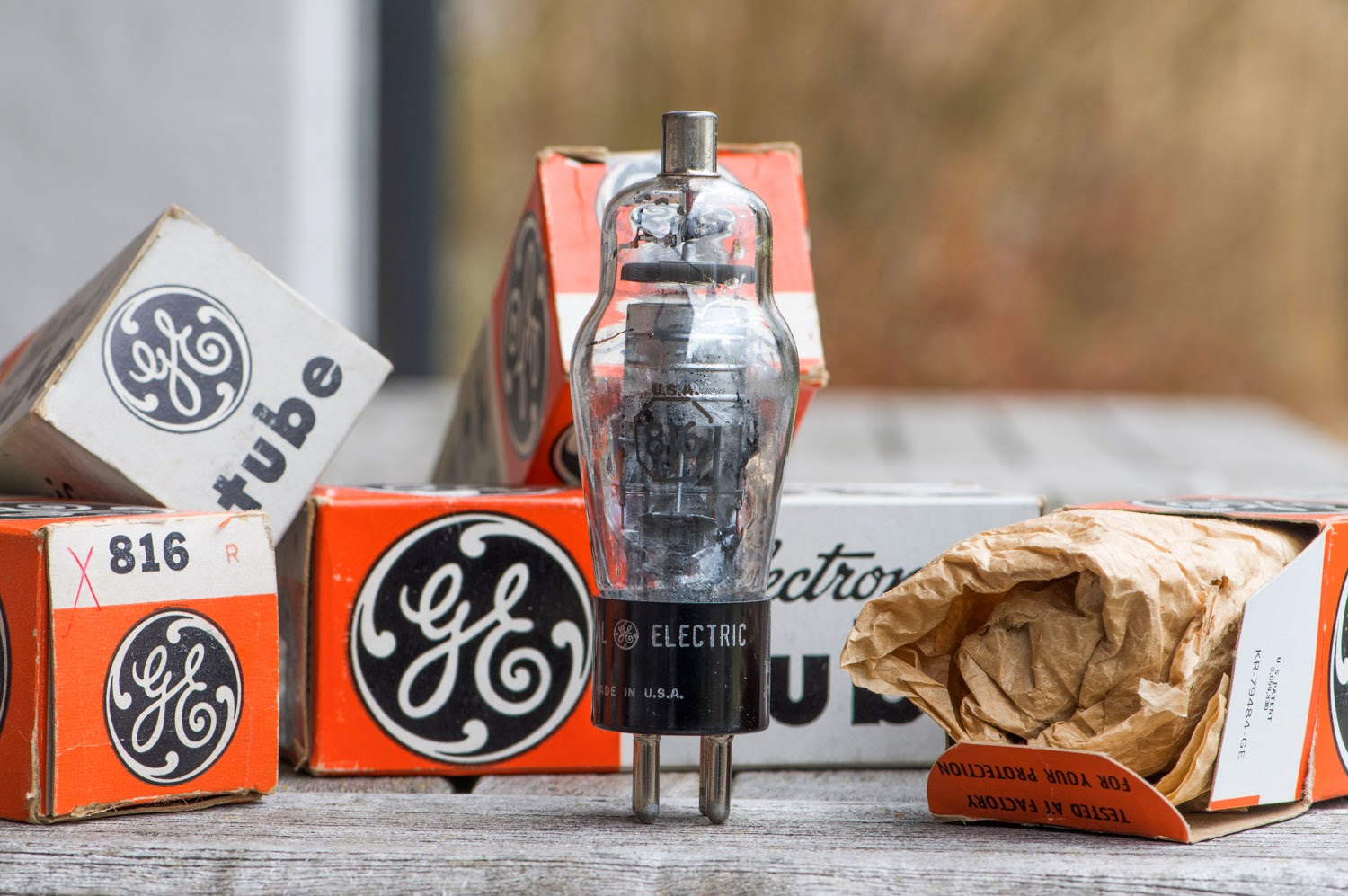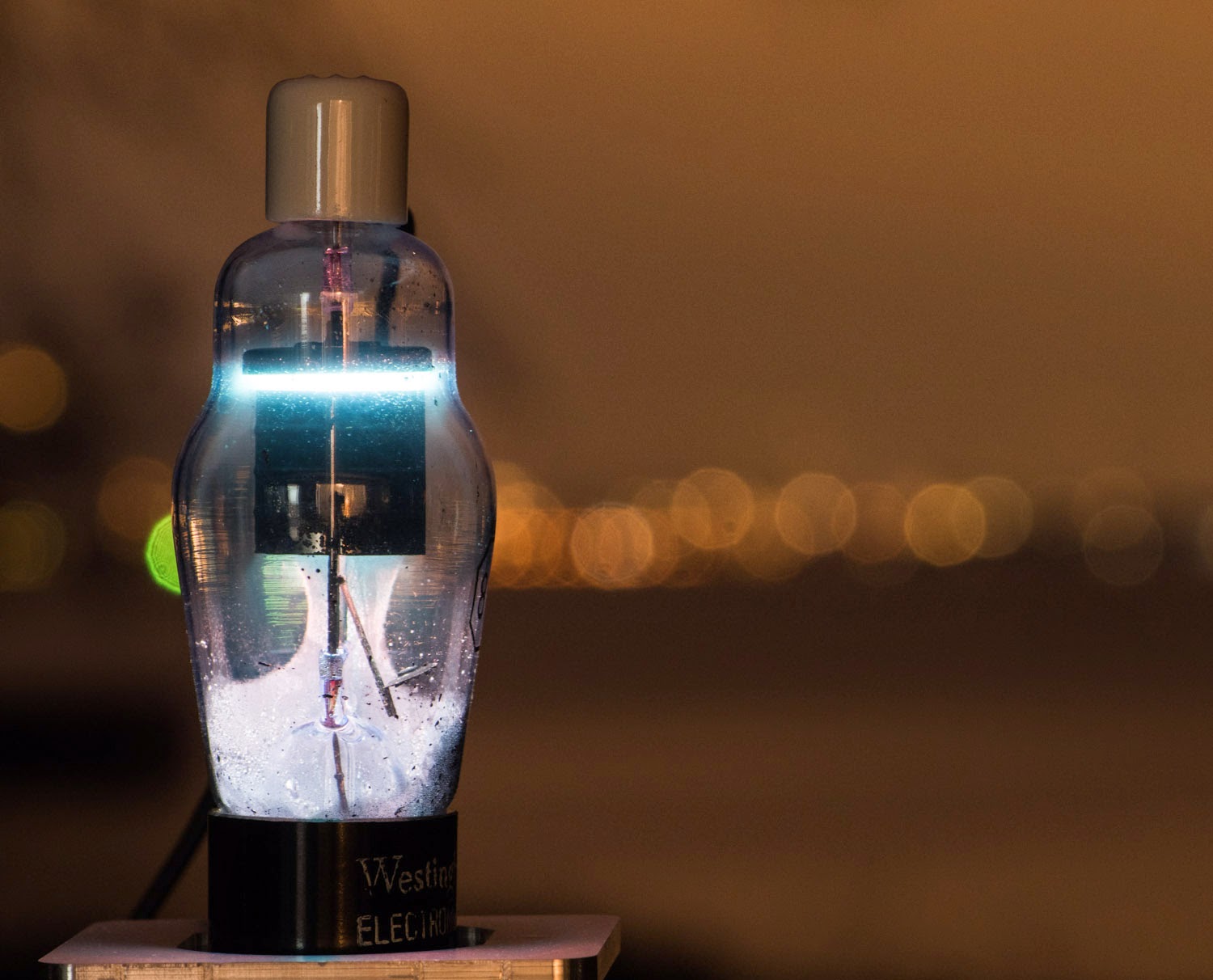In this post I will show the single ended 6CB5A power amp which was built to be used together with the recently shown Octal Preamplifier Mk2.
This amp is built based on the same circuit and similar parts quality as the 'no compromise 6CB5A amp' presented in 2013. Instead of the Tango transformers in the 2013 amp this one is built with Hashimoto interstage and output transformers.
The external power supply is built in the same design as that of the preamplifier. It also uses a pair 816 mercury vapour rectifiers in conjunction with two 6AX4 TV damper diodes. This hybrid bridge arrangement givse a nice blue glow in operation:
The power supply has panel meters to monitor B+ voltage and total current through the amp. The same style on both amp and preamp. The latter now also in it's final housings:
Like the preamp, this type of power amp is a smart choice if maximum sound quality within a given budget is the goal, rather than forcing the use of a certain tube. The budget which is saved on the output tubes went into the parts quality of the rest of the amp. The result justifies this approach. Even with the rise of the Elrog 300B, I still love the 6CB5A. This amp represents the ultimate level of the 6CB5A concept. While my entry level 300B is 50% more expensive, this 6CB5A amp uses even higher quality interstage and output transformers.
The matching preamplifier and power amplifier combo:
No directly heated triode anywhere, yet super smooth sound with tons of tone colors. High resolution and very quiet operation. I have been listening with this combination for a couple of days now and am amazed how beautiful it sounds. No urge to switch to a 300B amp or 10Y line stage.
Of course a DHT power amp and line stage do provide more resolution, even more tone colors and a separate LCR phono stage does improve on articulation of voices. So if the budget allows, DHT and LCR are the way to go. But rather than forcing the use of DHTs or LCR RIAA into a certain budget, the Octal preamp and 6CB5A power amp give much more satisfactory results!
Top views of amp and PSU:
I cannot repeat it often enough that the tube type alone does not guarantee good sound. It is always the entire concept and the balance of the quality of parts and circuit. Yet many audiophiles just want a 300B or must have a directly heated preamp or a LCR phono. It is important to understand that DHTs need high quality surrounding circuits to perform at their best. While indirectly heated tubes don't require a lot of attention in the heater supply, DHTs are very sensitive and need the best possible filament supplies. That's why I recommend to use the 6CB5A over the 300B below a certain budget.I'd rather listen to a max'ed out 6CB5A amp like this than a compromised 300B.
Best regards
Thomas


















































